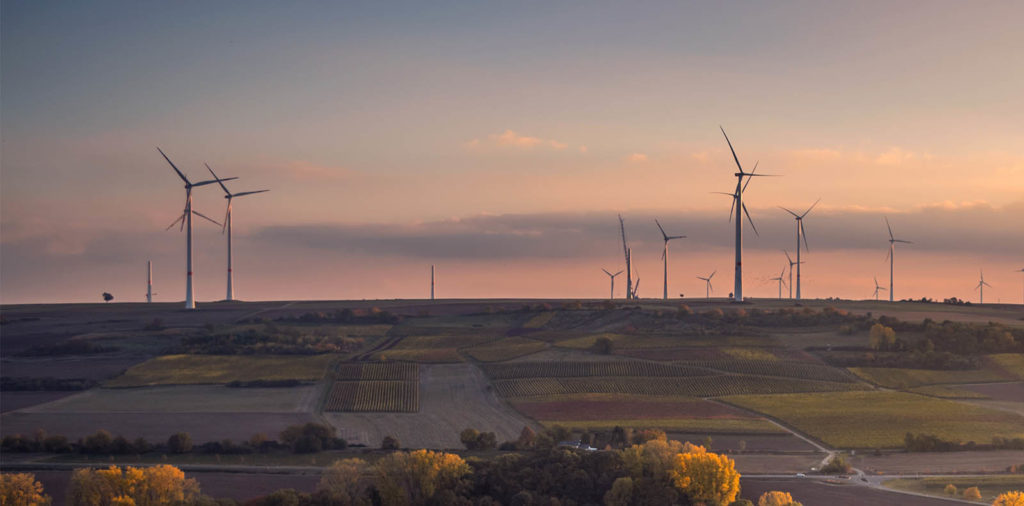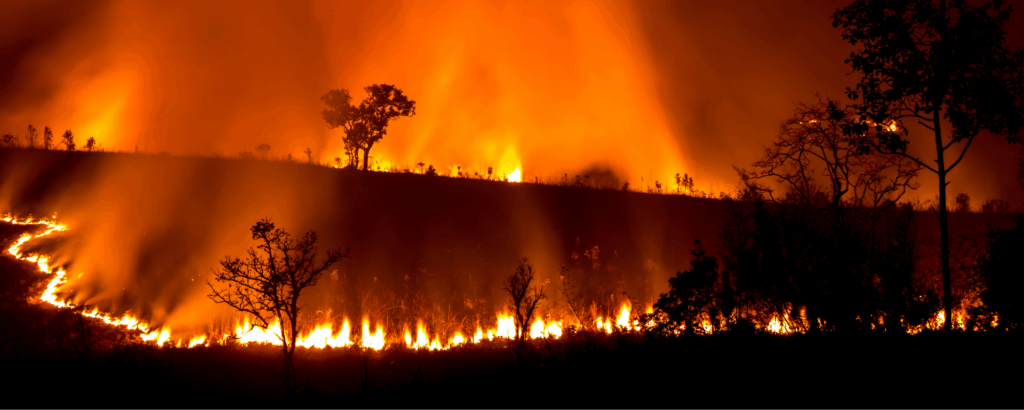In 2015, the Paris Agreement made history. 195 countries came together at the world’s biggest summit on climate action (also known as COP21) and agreed to the world’s first binding international agreement to limit climate change and adapt to its impacts.
Importantly, countries agreed to work together to hold ‘the increase in the global average temperature to well below 2°C above pre-industrial levels’ and pursue efforts ‘to limit the temperature increase to 1.5°C.’
Every national government must now establish a clear plan to reach net zero emissions with regularly updated targets to cut climate pollution.
As governments converge once more at the United Nations Climate Conference, this time, COP30 in Belém, Brazil, some are asking what have we achieved to combat climate change?
The past three years have been the hottest on record, climate disasters have slammed every continent this year and climate pollution from coal, oil and gas continues to rise.
10 years after Paris, it’s worth taking stock of where we are at, how much the world has achieved, and the task ahead.
We’ve made substantial progress in the global shift to clean energy
Pollution from coal, oil and gas continues to rise, but much more slowly
In 2023, the international community agreed to switch away from fossil fuels, finally formally acknowledging the contribution of coal, oil and gas to global warming.
This agreement was labelled the ‘beginning of the end’ for fossil fuels globally. While we still have a long way to go, the global energy mix is shifting away from coal, oil and gas:
- Global emissions are slowing: the latest data shows that we are burning more fossil fuels than ever and emissions continue to climb, but the rate of growth has dropped from 2% per year to 0.6% per year.
- The world’s biggest polluter’s emissions have peaked: China’s emissions are already peaking, five years ahead of previous projections.
- Countries are phasing out coal: this year, Ireland became the eighth country to phase out coal generation since the Paris Agreement was signed. Many more have committed to becoming coal-free over the coming years, including nearly the entire European Union.
- More countries are committing to get off coal, oil and gas: Pacific Island Nations are leading a diplomatic campaign for a global phase out of coal, oil and gas, calling for a Fossil Fuel Non-Proliferation Treaty. In addition, 62 countries led by the UK and Canada have pledged to phase out unabated coal generation completely through the Powering Past Coal Alliance.
Clean energy is transforming the world
The global energy transformation is gathering speed: low-emissions energy sources (including wind, solar, hydropower and nuclear) now generate more than 40% of the world’s electricity, compared to 33% in 2015.
Clean energy is smashing records:
- 2025 saw a significant milestone: in the first six months of 2025 the world generated more power from solar and wind than from coal.
- Record-breaking renewable rollout: Global renewable electricity generation is expected to nearly double by 2030 – enough new renewable generation to meet the combined power demand of China and the US.
- Solar is booming: It took eight years for the world’s solar capacity to go from 100 TWh to 1,000 TWh, then just three years to double to 2,000 TWh. Solar prices have dropped 66% in the past decade, becoming the cheapest form of power in history.
- Investment in clean energy has increased 10x: Investment in clean energy has grown from around US$230 billion in 2013, to $2.2 trillion in 2025 (equivalent to AU $3.4 trillion – twice as much as global investment in coal, oil and gas).
- China: The world’s biggest polluter, China, is transforming into a clean energy juggernaut.
- Cleaning up transport: One in five cars sold worldwide is now electric, compared to just 1% in 2015.
Read more in our report Power Shift: The US, China and the Race to Net Zero


Net zero is the global minimum
When the Paris Agreement was signed in 2015 no countries had formal net zero targets. Now,
83% of the global economy has a net zero target. Analysis shows that climate targets are becoming more robust over time, covering more sectors and gases. The majority of countries also have targets to increase renewable generation.
The Paris Agreement aims to reach peak global greenhouse gas emissions as soon as possible, reaching net zero by the second half of this century. If all countries follow through on their commitments, global emissions are expected to peak by 2030. However, to limit global heating to 1.5°C without overshoot, global climate pollution needed to peak this year, at the latest, and fall by 43% on 2019 levels by 2030.
But global temperature is rising, and so are the impacts
We are already living in a hotter and more dangerous world, fuelled by climate pollution from coal, oil and gas. Today we are at 1.3°C of global warming, and the past three years have been the hottest on record.
In 2015, the world was on a catastrophic path to an average global temperature increase of 4°C by the end of this century. Now, according to the latest official data, we are tracking towards 2.3 – 2.5°C, if countries reach their targets.
This is a more dangerous future, and still falls far short of what is needed. Global warming of 1.5°C is considered the upper limit of what vulnerable communities, coral reefs, and many ecosystems can withstand. Science is clear that crossing the 1.5°C threshold increases the risk of triggering irreversible and cascading climate impacts. Transformative action, delivered urgently, is needed to limit how much and for how long we overshoot this threshold, and to bring temperatures back down to safer levels.
The only way to do so is by cutting pollution from coal, oil and gas further and faster than we are today, in all the places we can do so.
With almost half the world’s population already vulnerable to the effects of climate change, global work to adapt, build resilience and deal with loss and damage caused by climate-driven disasters is critical. The Paris Agreement set a Global Goal on Adaptation to increase countries’ efforts to prepare for and manage the impacts of climate disasters. In 2023 countries agreed to an adaptation framework, and a key focus of COP30 in Belém is to establish indicators to measure this progress.
The international community has also established a new Loss and Damage fund, and as of June this year, 27 countries had pledged more than AU$1.2 billion. This represents a small fraction of the estimated economic costs of climate change-induced loss and damage in developing countries of up to $AU800 billion in 2030, rising to up to 2.6 trillion by 2050.
We need to do so much more – and Australia has a key role to play
Australia is a major climate polluter: we are the world’s 10th largest polluter on a per person basis, and one of the largest fossil fuel exporters. So we have an important role to play at home, and abroad. With the right policies, Australia can contribute to global goals while growing our own economy and creating skilled jobs.
Powering past our climate targets
Under the Paris Agreement, the Albanese Government has pledged to cut climate pollution 43% by 2030, 62-70% below 2005 levels by 2035 and reach net zero by 2050.
Our analysis shows we can, and should, be doing much more to keep Australians safer. Read more about our analysis of Australia’s target and temperature rise scenarios
To keep Australians safer from worsening climate harm, and unlock Australia’s economic opportunity, the Australian Government should put in place policies to not just meet a 70% reduction, but power past it.
Growing green export industries
Australia also has a significant opportunity in the global shift to renewables. By making use of our abundant renewable resources and critical minerals we can support global decarbonisation while boosting our own economy and creating skilled jobs in future-focused export industries. Australia’s green export opportunity could create over 400,000 jobs by 2040, growing the economy by $100 billion per year.
Phasing out fossil fuels
We must also deal with polluting fossil fuels. We can start by stopping approvals of new and expanded fossil fuel projects. At the moment our environment law doesn’t include any mechanism to consider the climate impacts of such projects on our environment.
The Government has approved seven coal and gas projects this year alone, and 32 since forming government in 2022. Another 42 are waiting to be assessed.
The Albanese Government can still deliver credible environment laws that protect the places we love from climate harm, and don’t undermine our climate laws and policies.
Find out how Australia’s national environment law measures up on climate, and how we can fix this.










